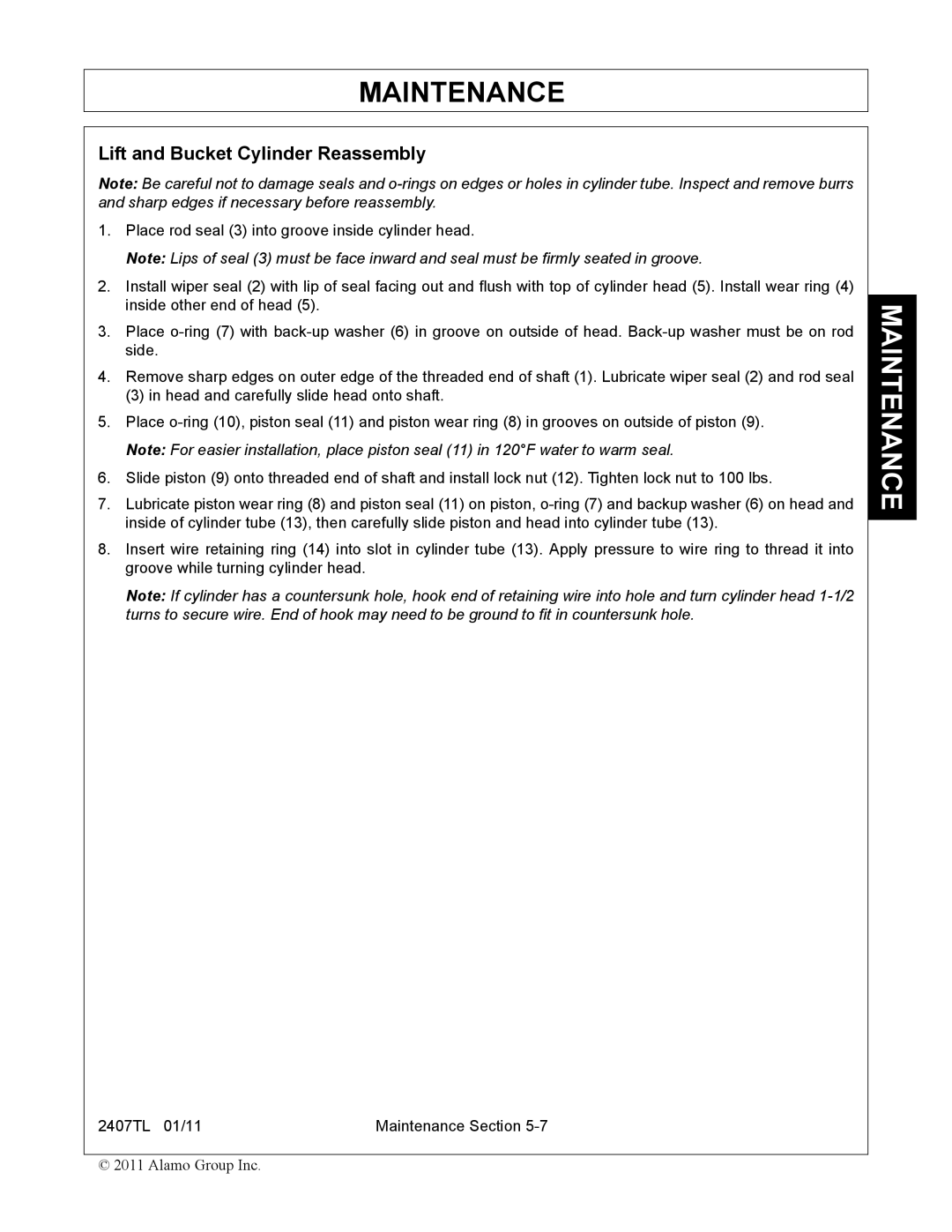2407TL specifications
The Servis-Rhino 2407TL is a robust and efficient tractor loader designed for agricultural and industrial applications. Known for its versatility, this machine is equipped with advanced features, making it a valuable asset for handling various tasks on the farm or job site.One of the standout characteristics of the 2407TL is its powerful engine, which delivers exceptional performance while maintaining fuel efficiency. The engine is designed to provide high torque at low RPM, making it ideal for demanding tasks such as lifting heavy loads and digging. With a maximum lift capacity of 2,400 pounds, the 2407TL can easily handle a variety of attachments, including buckets, forks, and grapples.
Equipped with a hydrostatic transmission, the Servis-Rhino 2407TL offers smooth and precise control. This technology allows operators to adjust their speed seamlessly without having to shift gears, enhancing productivity and ease of use. Additionally, the transmission features a two-speed range, providing flexibility for both high-speed transport and low-speed operation, which is ideal for maneuvering in tight spaces.
The machine’s design emphasizes operator comfort and safety. The spacious cab is equipped with ergonomic controls that are easily accessible, reducing operator fatigue during long working hours. Large windows provide excellent visibility, allowing the operator to have a clear line of sight to the work area and enhancing overall safety. Furthermore, the cab is designed to minimize noise and vibration, creating a more pleasant working environment.
Another notable feature of the Servis-Rhino 2407TL is its four-wheel drive system, which offers enhanced traction and stability, especially in challenging terrains. This technology ensures that the loader performs optimally even on steep inclines or in muddy conditions, making it a reliable choice for various applications.
In summary, the Servis-Rhino 2407TL tractor loader combines power, efficiency, and comfort. With its strong engine, hydrostatic transmission, thoughtful design, and advanced traction capabilities, it stands out as an excellent tool for operators looking to enhance their productivity in agricultural and industrial settings. Whether it's loading, digging, or transporting materials, the 2407TL is engineered to meet the demands of modern operations.

